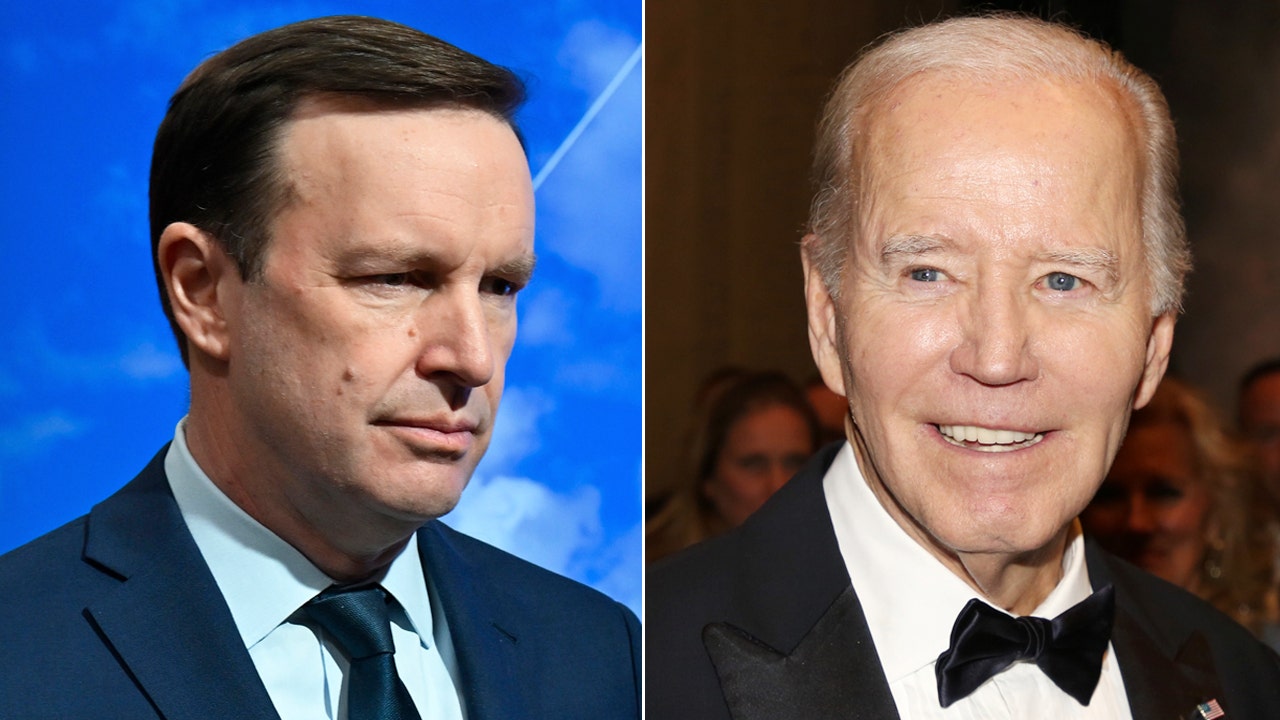Denver, CO
Adaptive Reuse Survey IDs 22 Denver Commercial Buildings That Could Become Housing

Denver
Denver is upping its efforts to spur property conversions, which could simultaneously breathe new life into the city’s old office buildings and help residents struggling to find an affordable place to live.
A study by Gensler commissioned by Denver officials identified 22 buildings that are “good candidates” for adaptive reuse. Along with the study, Denver’s Community Planning and Development department launched its “Adaptive Reuse Pilot Program in Upper Downtown.” The program matches property owners who are interested in converting their building to residential units with a dedicated project coordinator to walk the applicant through Denver’s entitlement process.
The moves are Denver’s latest step toward creating more housing out of its underused downtown buildings. Denver has a 21.2% office vacancy rate, one of the highest in the nation, according to data from Avison Young, which means there is unused commercial space that could be converted. Denver’s median home price has also increased significantly since the pandemic began in March 2020. The city’s median home sales price stood at more than $696K in July, a 19% increase over the previous three years, according to the Colorado Association of Realtors.
Denver officials say they are going to use the results of the report and pilot program to inform their next steps. While a wave of conversions could remake Downtown, some building owners say there are communication issues to work out if the strategy is going to pay dividends for the Mile High City.
“Denver has a long history of successful adaptive reuse, and as the survey indicates, there is a lot of potential downtown to provide additional housing to help transition from a Central Business District to a Central Neighborhood District,” Denver Community Planning and Development Executive Director Laura Aldrete said in a press release.
The city’s latest foray into the adaptive reuse space is more consequential than in previous years, Jon Gambrill, co-managing director of Gensler’s Denver office, told Bisnow. Denver’s downtown core was originally designed around office spaces, but now the city is at a point where it needs to create a central downtown neighborhood with retail options, restaurants and entertainment venues to attract people, he said.
Gensler started with a list of 69 properties selected by the city and county and whittled it down to 29 buildings that it found are possible candidates for conversion. Those buildings make up about 4.8M SF of downtown’s overall office footprint of 30.6M SF.
Twenty-two of the buildings — or 76% of the shortlist — were categorized as “good” candidates, which means developers could likely successfully convert them. That total puts Denver ahead of other cities Gensler studied for adaptive reuse where between 20% and 30% of the building stock was identified as a “good” candidate for conversion, Gambrill said. An additional seven buildings were identified as “possible success,” but Gensler said those properties require further study, and compromise would be needed to make those conversions work.
Sixteen buildings out of the 22 were identified as “top candidates” for conversion projects, and Gensler executed individual feasibility reports for those assets. These buildings make up about 4.3M SF and are spread out across the Central Business District and North Capitol Hill neighborhoods.
Though adaptive reuse can sometimes be portrayed as a silver bullet that removes obsolete and empty office space while adding needed housing, many factors can prevent a building from being a good candidate. Gensler studied five categories in determining suitability: site context such as walkability and natural light, how the shape of the building would allow for planning unit layouts, floor plates including window to core distance and number of elevators, envelope factors such as window to wall ratio, and servicing such as parking capability.
Denver would gain a little over 5,000 housing units if all of the 16 top candidate buildings were converted into residential, the survey estimated. Economists at the Common Sense Institute estimate Denver needs to build between 31,000 and 49,000 units to keep up with population growth through 2028.
Adaptive reuse could also help Denver meet its greenhouse gas reduction goals, Gambrill added. The survey estimates that the city could save between 194 million and 268 million kilograms of carbon dioxide by converting the top 29 buildings instead of tearing them down and starting over again. That greenhouse gas reduction is like removing emissions from nearly 20 coal-burning electric plants from Denver’s atmosphere, according to estimates from National Geographic.
Some of the buildings identified for conversion include the LoDo Towers at 1401 17th St. and Trinity Place at 1801 Broadway, which is anchored by Bank of Colorado on the ground floor. Gambrill said Denver was focused on identifying “clusters” of buildings in older areas of town that are near public transit options because they lend themselves to creating a micro-neighborhood that can then expand into other areas of town.
Half of the top candidates for conversion are located along either 17th Street or Broadway, two of Denver’s most historic streets. 17th Street is sometimes referred to as the “Wall Street of the West,” after a crop of new towers built in the 1970s and 1980s became home to financial firms, real estate brokerages and other business services companies. Similarly, Broadway has grown from being Denver’s central streetcar line to one of the city’s busiest thoroughfares.
Gambrill pointed to Cherry Creek North as an example of what Denver’s downtown core could look like in the future, if the city converts most of the 22 identified buildings. Cherry Creek North started as a residential neighborhood with restaurants and retail, but has slowly added office space to accommodate increased business travel to the area.
“For a lot of the buildings downtown, it seems like they have a pathway to being converted into another use like multifamily,” Gambrill said. “Others may decide to wait and see how the return-to-office movement plays out to see if converting makes sense.”
Despite the elevated focus on adaptive reuse, some building owners say communication from the city has been lacking. Rob Naiman, who owns the University Building at 901 16th St., told Bisnow the city had not notified him that his building was a prime target for adaptive reuse. The building scored a 91% for adaptive reuse compatibility, which the survey showed was driven by its floor plan and site context. It also has an estimated 51% vacancy rate between its office and retail spaces.
Naiman said he has previously hired architects and consultants to see if the building could be converted into residential spaces. He said he never followed through on any of the findings, but the city’s new adaptive reuse initiative could spur him to action.
“With downtown not being what it used to be, I guess we’ll need to start looking at these things more seriously,” Naiman said.

Denver, CO
Keeler: Rockies even had Denver youth league coaches shaking their heads Saturday

It was a youth league play. Only the youth leaguer sitting next to me would never have done it.
“That’s illegal,” Easton English said. The 8-year-old from Parker then rose higher in his seat in Section 126 at Coors Field. “That is Illegal!”
Sure is. When you’re on the express train to 100-plus losses, you’re going to come up with creative ways to lose over 162 games. The Rockies managed to find a new one on Saturday against the big, bad Yankees.
The Local Nine gave up a 10-spot in the top of the fifth that featured three walks, seven hits, 14 batters and a viral moment from second baseman Adael Amador.
As Yankees first baseman Paul Goldschmidt looped a single over the infield and into short right, the sublime gave way to ridiculous. At game speed, Amador appeared to lose his glove in midair as the ball went whizzing over his head. Only on replay, it didn’t look as much “lose his glove” as “fling his glove at the ball during mid-flight.”
“I haven’t talked to him about that,” Rockies interim manager Warren Schaeffer said after Colorado was smushed, 13-1, dropping to 9-43 in a season that’s still got 110 games left. “I’m not quite sure what that was. We’ll get to the bottom of it.”
Actually, young Easton already did. MLB rule 5.06 (4) (C) awards the batter and runner three bases if the fielder is adjudged to have deliberately thrown his glove at a live batted ball and said glove touches that ball. There’s no penalty if the ball is not touched or the removal is perceived to have been accidental. Amador told The Post’s Corey Masisak, through an interpreter, that the glove accidentally slipped. The umpiring crew agreed.
Amador stayed in the game. Goldschmidt’s single made it 9-1 Yankees. The Bronx Bombers plated two more after that to put the game away, so the airborne glove became a moot point.
But back in Section 126, where Easton was watching the game with his family, it became another Rockies learning experience. Another perfect example of what not to do.
Easton, you see, is a center fielder with the Parker Knights 8-and-under baseball team. His father, Kevin English, is one of the Knights’ assistant coaches.
“You ever see a flying glove in Parker?” I asked Kevin.
“Never seen it,” he replied.
“You ever teach a flying glove in Parker?” I asked.
“Never would teach that,” he countered. “Don’t think it would ever come up beyond t-ball.”
English brought the crew to 20th & Bleak because it was a rare Saturday matinee and because Yankees slugger Aaron Judge was in town. He expected some jaw-dropping moments. He didn’t count on a teaching one.
“I mean, that was like 8U ball, that one,” Kevin said. “That many runs (in an inning)? That’s what youth baseball is all about.”
Come for the party deck, stay for the life lessons. The Rockies are 2-10 since firing manager Bud Black, and Colorado finishes May with the Cubs and Mets on the road.
“Everybody knows it’s not Bud’s fault,” Kevin said. “That’s a good baseball guy right there.”
Kevin knows good baseball guys. In the English family, the pastime is more than a legacy deal — it runs in the blood. Kevin’s dad, Randy, was a pitcher at Oklahoma State in the late ’70s. As a Poke, his position coach was Tom Holliday — father of Rockies legend Matt Holliday and grandpa of next-gen baseball standouts Jackson and Ethan.
“Every now and then, (my dad messages me), ‘Hey, the Rockies, they just (stink), don’t they?’” Kevin chuckled. “I’m like, ‘Yeah.’”
Yet English wants to watch the games with his son, the way his dad watched games with him. Even if it means forking over $89.99 to the team directly for streaming access, or $19.99 per month.
“I like bringing my son out because I’m trying to teach him young,” Kevin continued. “It’s a game of failure, right? … You’re going to fail more than you succeed. ‘Watch them do the little things. Watch them hustle. Watch them just do little things over and over before the play.’”
Watch them chuck a glove at a single while it’s in the air!
“It’s kind of funny, because my son never really showed a ton of interest in baseball (before this year),” said Kevin, who, yes, named his Easton after the iconic baseball equipment company.
“I never made him play. I’m not going to be like that. But this year, kind of his first year at it, we’re going pretty good.”
In fact, Dad says, their Knights had more wins (12) than the Rockies (nine) as of Saturday night. Must be the coaching.
“Are you rooting for the Rockies or Yankees?” I asked Easton.
“Yankees.”
“How come?”
“Aaron Judge.”
“What advice would you give Rockies players right now?”
“They should pretend it’s a scrimmage and have fun. Don’t worry if people are on base. Just do what you do.”
Please don’t.
“You know, (Easton) asked me, ‘Are the Rockies any good?’ It’s like, ‘They’re not that good, no. But, you know, they have been good. They have been to a World Series. Rocktober, that was fun.’
“But you just tell them, like, ‘Hey, you’re going to be on teams that aren’t always the best, right? They’re not always good, but your attitude and effort is what you can control when you go out there and you play hard, right?’ So, yeah. You know, (the Rockies) are not going to be bad forever.”
He chuckled again.
“At least, you hope not.”
Want more sports news? Sign up for the Sports Omelette to get all our analysis on Denver’s teams.
Originally Published:
Denver, CO
Man kidnapped, sexually assaulted 4 women at gunpoint in Denver and Aurora, police say

A metro Denver man kidnapped four women at gunpoint and sexually assaulted them after he found them on hookup websites, according to an arrest affidavit.
Glen Orion Meridith, 36, was arrested May 13 on suspicion of eight counts of sexual assault, three counts of kidnapping and menacing and one count of assault related to drugging a victim.
Aurora and Denver police identified Meridith while investigating four assaults across the two cities in December, January, February and March, detectives wrote in the affidavit.
The assaults followed a similar pattern — Meridith would meet the women, some of whom were escorts, through websites or apps for personal ads, including the site “Mega Personals.”
He would then pick up the victims in his red Jeep and, in some cases, give them money before he pulled out a gun and pressed it to their necks or temples. He threatened them and forced them into the back seat, where the doors were locked with child locks, then took their phones and sexually assaulted them multiple times.
Meridith would sometimes snort or smoke cocaine and drink during the assaults and record them on his phone, investigators said. He forced one of the women to take cocaine during an assault.
Several of the women reported choking, struggling to breathe and vomiting during the assaults, police wrote.
With two victims, he accused them of being responsible for him being robbed after previous “hookups,” but the women told police they had never met Meridith before. In one incident, Meridith kept the victim in his car for 13 hours after the assault as he drove around Denver before she was able to escape, investigators said.
After the other assaults, Meridith would drive to a different location and threaten to kill the women if they didn’t leave immediately.
Investigators believe there may be other victims in the case, and anyone with information can contact the Denver Police Sex Crimes Unit at 720-913-6040.
Meridith is in custody at the Denver County Jail on a $1 million bond. He’s set to appear in court on June 12.
Sign up to get crime news sent straight to your inbox each day.
Denver, CO
Denver sues Trump administration over threat to withhold $600 million in transportation funding

Denver this week sued the Trump administration over its threat to withhold as much as $600 million in federal transportation funding if the city refuses to align its politics with the president’s stances on issues of immigration and diversity.
Denver joined nearly three dozen other cities and counties in the 105-page lawsuit, filed Wednesday in U.S. District Court for the Western District of Washington.
The cities and counties take issue with U.S. Transportation Secretary Sean Duffy’s April memo that warned local jurisdictions they could lose access to federal transportation funding if they do not comply with the Trump administration’s positions on both immigration enforcement and diversity, equity and inclusion efforts.
Any program or policy “designed to achieve so-called ‘diversity, equity and inclusion,’ or ‘DEI,’ goals, presumptively violates federal law,” Duffy warned in the memo. Localities receiving federal funds must also fully cooperate with federal immigration enforcement or risk losing the money, he wrote.
The cities and counties that sued argue the new federal conditions on awarding the funding are unconstitutional and that the Trump administration does not have the authority to set conditions beyond what Congress has established.
“The Trump administration is willfully breaking the law and, in ignoring the separation of powers between Congress and the White House, violating the bedrock constitutional foundation on which our country was built,” Denver Mayor Mike Johnston said in a statement Friday.
Denver’s Department of Transportation and Infrastructure is the recipient of about $300 million in federal funding, while Denver International Airport received about $310 million between the 2022 and 2024 fiscal years, according to the mayor’s office.
The airport is expected to be eligible for an additional $267 million in grants from 2025 to 2028, a city spokesman said in a news release.
Across the almost three dozen cities and counties that are suing — including San Francisco, New York, Boston, Seattle, Minneapolis, Pittsburgh and Nashville, Tennessee — almost $4 billion in awarded or soon-to-be awarded federal funding is at risk, the lawsuit alleges.
“Allowing the unlawful grant conditions to stand would negatively impact Plaintiffs’ committed budgets, force reductions in their workforce, and undermine their ability to determine for themselves how to meet their communities’ unique needs,” the lawsuit says.
The effort is Denver’s second lawsuit this month against the Trump administration. The city last week joined a lawsuit with Chicago after the Federal Emergency Management Agency refused to pay Denver $24 million in previously awarded grant money.
Additionally, the U.S. Department of Justice sued Denver and Colorado earlier in May over state and local laws that limit how much local police can cooperate with federal immigration officials.
Stay up-to-date with Colorado Politics by signing up for our weekly newsletter, The Spot.
Originally Published:
-

 Technology1 week ago
Technology1 week agoLove, Death, and Robots keeps a good thing going in volume 4
-

 Technology1 week ago
Technology1 week agoMeta asks judge to throw out antitrust case mid-trial
-

 Movie Reviews1 week ago
Movie Reviews1 week agoClassic Film Review: ‘Mad Max: Fury Road’ is a Lesson in Redemption | InSession Film
-

 World1 week ago
World1 week agoCommissioner Hansen presents plan to cut farming bureaucracy in EU
-

 News1 week ago
News1 week agoVideo: Doctors Heal Infant Using First Customized-Gene Editing Treatment
-

 Politics1 week ago
Politics1 week agoDem senator says 'no doubt' Biden declined cognitively during presidency
-

 News1 week ago
News1 week agoNew Orleans jailbreak: 10 inmates dug a hole, wrote ‘to easy’ before fleeing; escape plan found
-

 World1 week ago
World1 week agoLeak: Commission to launch PFAS clean-ups in water resilience strategy





















